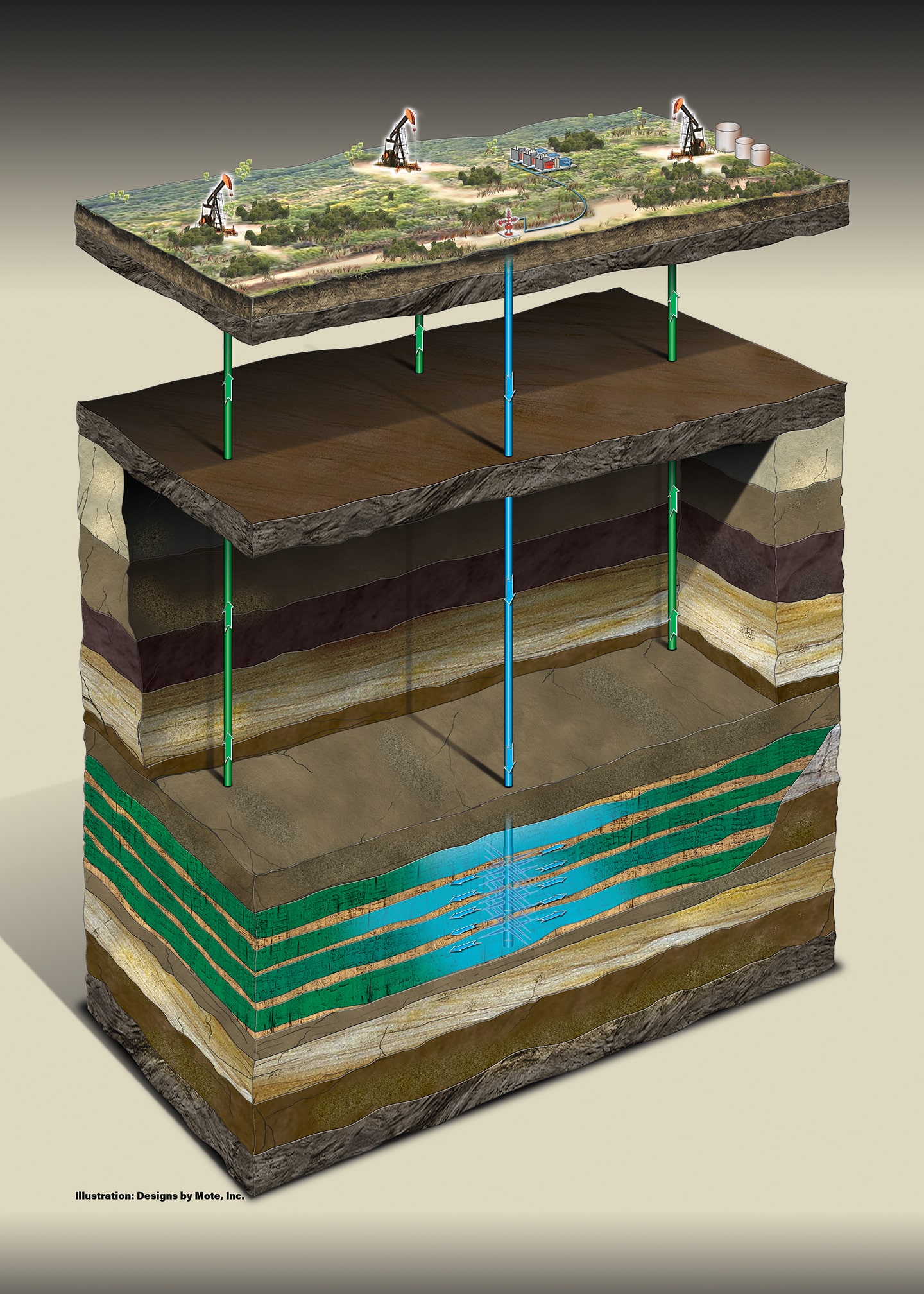Waterflooding Technical Courses and Training
Waterflooding Reservoir Engineering Courses and Training in Dallas
Professional Development for Petroleum and Oil Industry Engineers
At Haas & Cobb Petroleum Consultants, we offer in-depth waterflooding reservoir engineering courses and training in Dallas designed specifically for professionals working in the petroleum and oil industries. Our comprehensive five-day course provides both foundational knowledge and advanced techniques in waterflooding reservoir engineering, blending theory with real-world application.
What You’ll Learn
This technical training program focuses on the reservoir engineering principles behind waterflooding at well sites, as well as critical enhanced oil recovery (EOR) methods. Throughout the course, participants will:
- Examine the fundamentals of geology, rock and fluid properties, and immiscible displacement theory
- Learn to predict oil and water production rates, water injection rates, and recovery efficiency (areal, vertical, and displacement)
- Analyze key variables that influence overall waterflood performance
Advanced Waterflood Surveillance Techniques
The course covers a variety of surveillance tools that engineers can use to monitor and optimize both new and mature waterfloods in reservoirs. You’ll gain hands-on understanding of techniques including:
- Production plots and water-oil ratio (WOR) analysis
- Floodable versus primary depletion pore volume comparisons
- Injection profile testing and step-rate testing
- Pressure transient testing and Hall plots
- Pattern balancing and bubble maps
- Volumetric sweep evaluations
- Injection efficiency determination
These surveillance methods are essential for maximizing reservoir recovery and managing waterflood operations efficiently.
Practical Application Through Case Studies
To reinforce learning, we include multiple case studies that highlight real-world waterflooding challenges and solutions. These examples help participants see how concepts are applied in field settings and allow for interactive discussion on performance evaluation and optimization.
Who Should Attend
Our waterflooding reservoir engineering training is well-suited for:
- Reservoir engineers and geologists with several years of waterflooding experience
- Entry-level professionals looking to build a strong technical foundation
- Operators and technical teams involved in the design, implementation, or evaluation of waterflood projects
The course is structured with a mix of lectures, problem-solving exercises, and collaborative learning.
Course Availability and Custom Training Options
This course is offered publicly several times a year in Dallas. For organizations seeking customized instruction, we also provide in-house training tailored to your team’s needs and project focus.
Check our schedule for upcoming waterflooding courses, or contact us to learn more about private course options.
- Instructor – Michael L. Wiggins, Ph.D., P.E
Course Outline
FACTORS CONTROLLING WATERFLOOD RECOVERY
Initial oil in place, displacement sweep efficiency, areal sweep efficiency, vertical sweep efficiency
REVIEW OF ROCK PROPERTIES AND FLUID FLOW
Wettability, imbibition and drainage concepts, capillary pressure, air permeability, absolute permeability, effective permeability, relative permeability
DETERMINATION OF OIL IN PLACE
Current oil saturation versus initial oil saturation, gas saturation, porosity-permeability cutoffs, net pay determination, calibration of log porosity with core porosity, rock continuity and floodable pay, water floodable pore volume versus primary production pore volume versus total pore volume.
MECHANISM OF IMMISCIBLE FLUID DISPLACEMENT (Displacement Sweep)
Fractional flow equations, frontal advance theory, Buckley-Leverett theory, water saturation distribution, performance before breakthrough, performance after breakthrough, effects of gas saturation, fillup time
FLOOD PATTERNS AND AREAL SWEEP EFFICIENCY
Mobility ratio, basic flood patterns (line drive, five-spot, nine-spot, etc.), irregular patterns, peripheral patterns, iso-potential lines, streamlines, areal sweep efficiency, pattern selections
RESERVOIR HETEROGENEITY
Vertical permeability variation, areal permeability variation, detection of stratification, selection of layers, Dykstra-Parsons coefficient, effect of cross flow, vertical sweep efficiency
INJECTION RATES AND PRESSURES
Fluid injectivity, effect of mobility ratio, gas saturation, patterns and formation damage, pattern injectivity before and after fillup
WATERFLOOD PERFORMANCE PREDICTION
Dykstra-Parsons (DP) method; Stiles method; Craig-Geffen-Morse (CGM) method; comparison of DP, Stiles, and CGM; numerical models; empirical models
WATERFLOOD SURVEILLANCE
Production testing, production plots, cut-cum graphs, recovery factor versus net injection, floodable pore volume versus primary production pore volume, transient pressure testing, step-rate tests, Hall plots, injection profile management, pattern balancing, volumetric sweep determination, injection water quality
PLANNING A WATERFLOOD
Starting time, reservoir description, PVT data, primary production, gas saturation, patterns, injection water availability and compatibility tertiary recovery
Enrollment
We do not currently have a waterflooding course scheduled. If you are interested in taking this course and would like more information about when our next course will be held, please email schools@haasandcobb.com.


